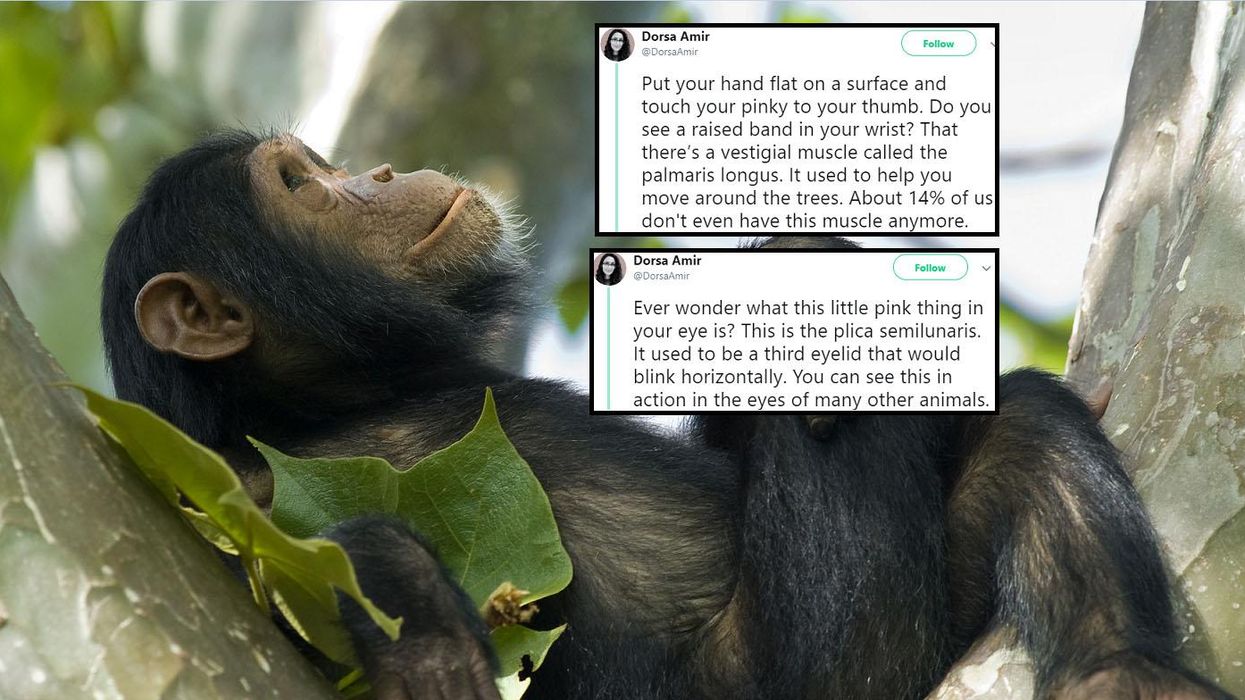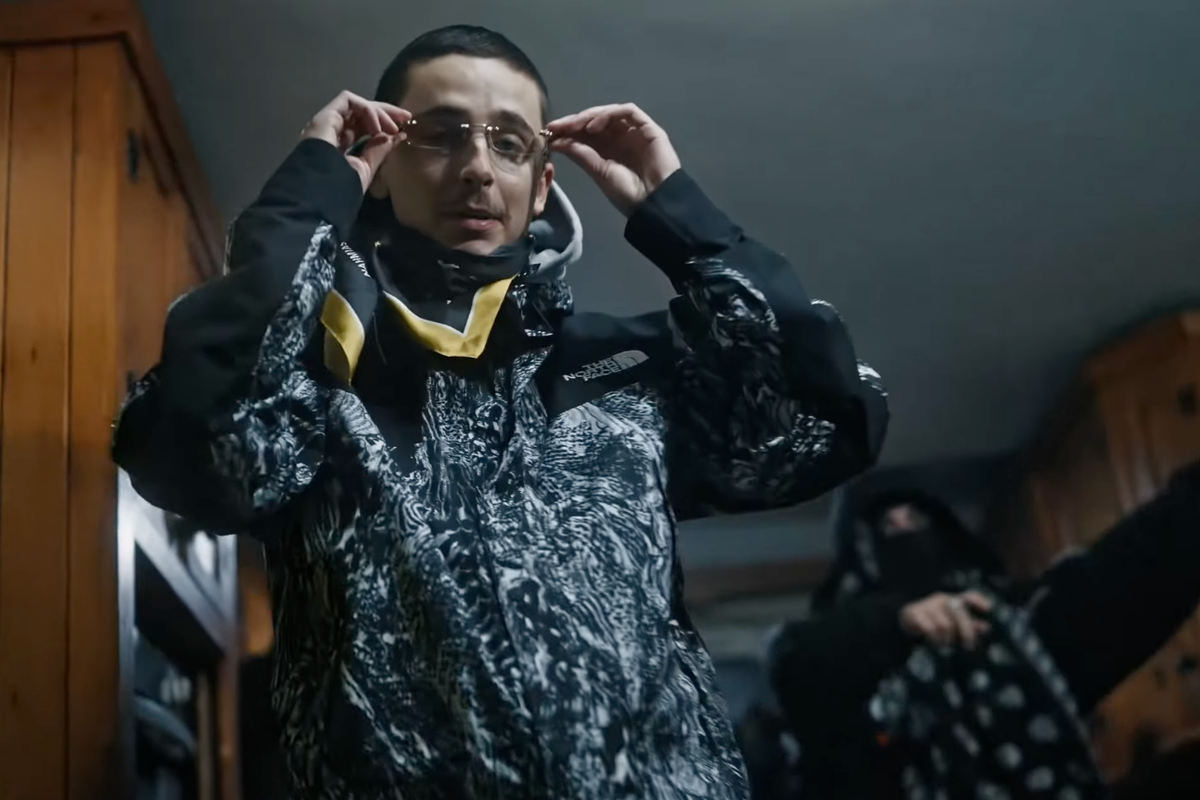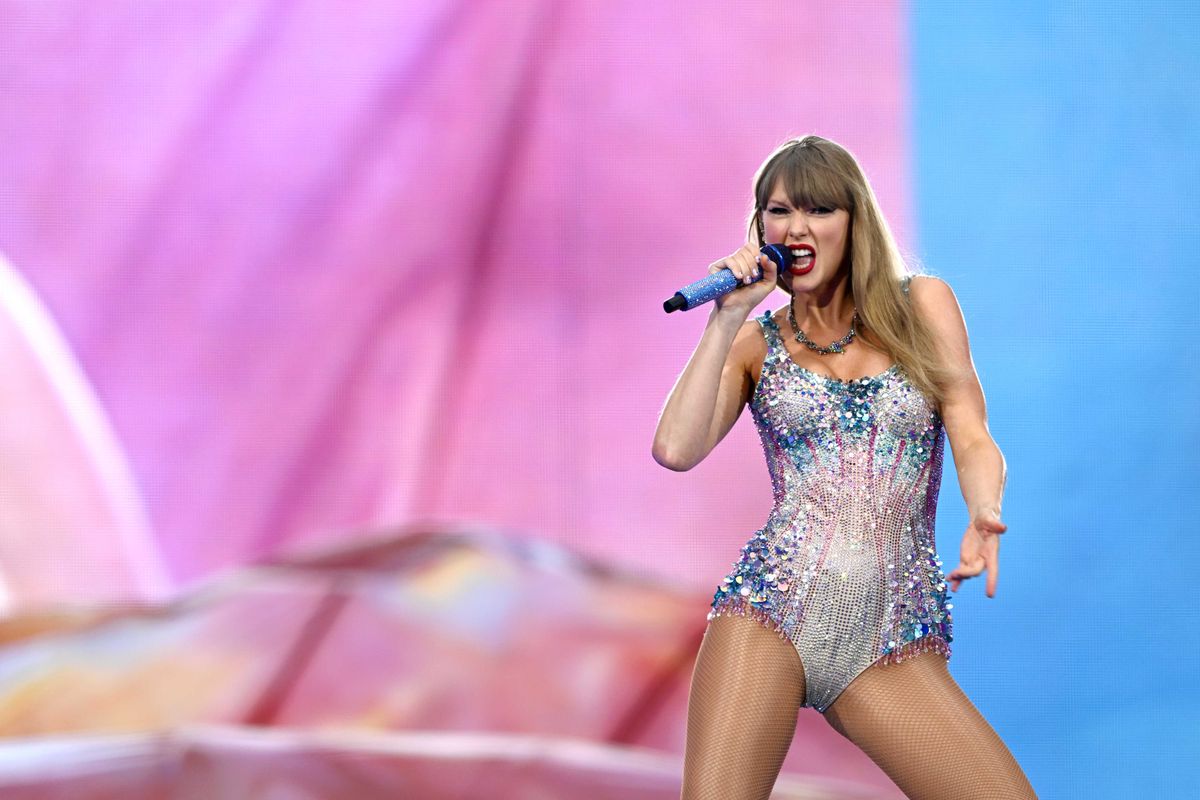News
Narjas Zatat
Jan 16, 2019

Picture:
iStock and Twitter screengrab
Dorsa Amir, an evolutionary anthropologist, took to Twitter to share some of the things humans have retained throughout their evolutionary history.
These are called vestigial structures, parts of the body that no longer serve a purpose, or the purpose has changed.
There are some ‘leftovers’, Amir calls them, that aren’t found on all people, and others that we all carry.
Here are some of the most interesting ones:
1. The palmaris longus.
A muscle found on your wrist, they once helped people move around the trees. Today, about 14 per cent of us don’t have them anymore.
2. Darwin’s tubercle.
This little bump on the top of your ears used to help move your ears around. Once humans developed flexible necks, it wasn’t needed anymore but remains on us nonetheless.
3. The tailbone.
"This is the ghostly reminder of our lost tails," Amir writes. They were used for balance and movement, and though we grow tails as embryos, the body ‘attacks and destroys’ them.
4. The plica semilunaris.
This was once a part of a third eyelid – some animals, such as cats still have this – that would blink horizontally.
5. Goosebumps.
Goosebumps, or when the hair raises on your arms out of fear or excitement or disgust, is a vestigial reflect that would add a layer of warm.
6. The palmer grasp reflex.
The cute action of a baby grasping your finger when you put it in their hand is, once again a vestigial reflex. Babies from thousands of years ago would have to grasp their parents.
More: BBC host accidentally drops C-bomb in awkward Jeremy Hunt gaffe on live TV
More: The new Spider-Man film is set in Europe and people are convinced it's about Brexit

Top 100
The Conversation (0)













